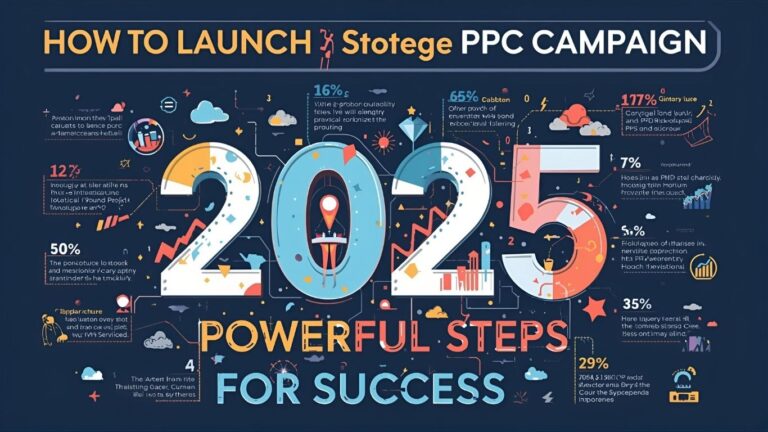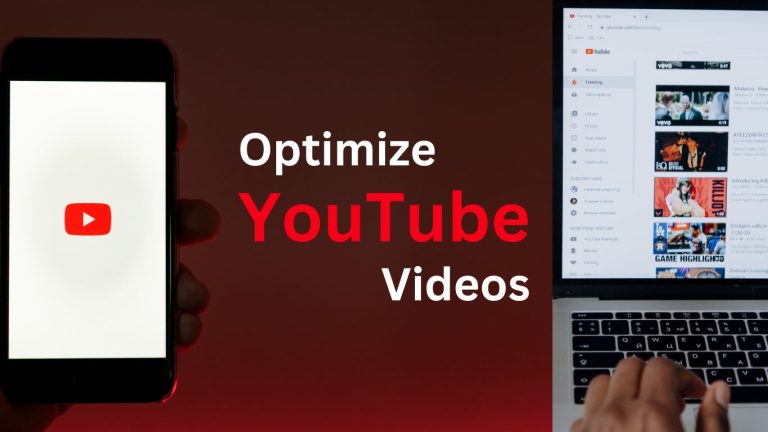How to Create a Fast Landing Page: Boost Speed & Conversions #LandingPage #WebOptimization
How to Create a Fast Landing Page: Boost Speed & Conversions
In today’s fast-paced digital world, every second counts. If your landing page takes too long to load, potential customers won’t stick around. They’ll bounce off to a competitor whose page loads in the blink of an eye. How to create a fast landing page is not just a technical skill; it’s a crucial component of your online success. But here’s the good news: optimizing your landing page for speed is completely within your control, and it can lead to improved user experience, higher engagement, and increased conversions.
In this comprehensive guide, we’ll walk through essential strategies and techniques for making your landing page faster without compromising on design, functionality, or performance. We’ll cover everything from reducing page load times to enhancing mobile optimization, all while focusing on SEO best practices to ensure your page ranks high in search engines.
Why Speed Matters for Landing Pages
Before diving into the how-to part, let’s take a moment to discuss why speed is so critical for landing pages. Imagine you’re a customer visiting an online store. You click on a link, and the page takes forever to load. Frustrating, right? Research shows that 40% of users abandon a webpage that takes more than 3 seconds to load. Furthermore, for every 1-second delay, conversion rates can drop by as much as 7%.
A fast landing page isn’t just about keeping users happy—it directly impacts your conversion rate. When your landing page loads quickly, visitors are more likely to engage with your content, fill out forms, and make a purchase.Let’s now dive into practical ways you can create a fast-loading landing page that also performs well in search engine rankings.
1. Understanding Landing Page Speed
To create a fast landing page, you first need to understand the technical aspects of speed optimization. Landing page speed is often measured by several metrics like time to first byte (TTFB), first contentful paint (FCP), and time to interactive (TTI). These metrics track how quickly key elements of your page load and become usable.
TTFB: How quickly the server responds to a request.
FCP: The time it takes for the browser to display the first content (like text or images).
TTI: How long it takes for the page to become fully interactive (all JavaScript is loaded and ready for user interaction).
By analyzing these metrics, you can pinpoint where delays are occurring and optimize accordingly.
2. Minimal Design for Maximum Speed
In the quest to create a fast landing page, one of the simplest ways to improve speed is by adopting a minimalistic design. Think of a website as a home. If your house is cluttered with unnecessary items, it’s going to take longer to move around. Similarly, if your landing page is filled with heavy graphics, animations, or redundant features, it will slow down.
Key Tips for Minimal Design:
Simplify the layout: Remove unnecessary elements that don’t contribute to your primary goal (like excessive images or widgets).
Use clear, concise copy: Avoid long blocks of text that can overwhelm the reader and slow down page load time.
A cleaner, minimalist approach doesn’t just enhance page speed—it can also improve user experience by keeping the focus on your call to action (CTA).
3. Optimizing Image Sizes and Formats
One of the biggest culprits in slow-loading pages is large image files. Think about it: if you’re trying to load high-resolution images that are several megabytes in size, it’s no surprise your landing page is slow. In fact, images often account for over 50% of a page’s total load time.
Here’s how to optimize images:
Compress images without losing quality. Tools like TinyPNG or ImageOptim can help.
Use the right file format. For example, WebP offers superior compression and quality compared to older formats like JPEG or PNG.
Lazy load images so they only load when they’re visible to the user. This can drastically reduce the initial load time.
By optimizing images, you can dramatically speed up the page without sacrificing visual quality.
4. Using Caching to Speed Up Your Page
If you’re wondering how to create a fast landing page without reloading the same content every time, caching is the answer. When a visitor loads your landing page, their browser can store certain elements (like images and stylesheets) for future visits. This means the page loads much faster the next time the visitor returns.
Types of Caching:
Browser caching: Stores static files on the user’s device.
Server-side caching: Caches dynamic content on the server.
Most WordPress sites can benefit from plugins like WP Super Cache or W3 Total Cache to implement caching easily.
By utilizing caching, you’re ensuring that users don’t have to wait to load resources repeatedly.
5. Leveraging Content Delivery Networks (CDNs)
A Content Delivery Network (CDN) is another excellent way to create a fast landing page. A CDN is a network of servers distributed globally, and it stores copies of your website’s static files like images, videos, and CSS. When a user visits your landing page, the CDN serves the content from the server closest to them, reducing latency and speeding up load times.
Some popular CDN providers include Cloudflare, StackPath, and KeyCDN.
By using a CDN, you’ll ensure that your landing page is fast, no matter where your visitors are located.
6. Reducing HTTP Requests
Every element on your landing page (such as images, scripts, and stylesheets) generates an HTTP request. The more elements there are, the longer it takes for the page to load. To reduce these requests, follow these strategies:
Combine files: Merge multiple CSS or JavaScript files into one file.
Use CSS sprites: Combine images into a single image file and use CSS to display only the required section.
Inline small CSS/JS files: Instead of linking to external files, you can include small pieces of code directly in the HTML.
Fewer HTTP requests lead to faster loading times, so trimming the fat on your page will certainly help speed things up.
7. Optimizing CSS and JavaScript
While CSS and JavaScript are essential for your page’s functionality, they can also cause delays in loading. How to create a fast landing page with these assets requires minifying and optimizing them.
Steps for Optimizing CSS/JS:
Minify CSS and JS: Remove unnecessary spaces, comments, and characters from your code.
Asynchronous loading: By making JavaScript files load asynchronously, your page’s content can load while the scripts are still being processed in the background.
Defer non-essential scripts: Load scripts that are not necessary for initial page load only after the page has finished rendering.
These steps will help your landing page load faster without sacrificing the functionality of important features.
8. Mobile Optimization for Faster Loads
It’s not just about desktop performance—mobile optimization is crucial in today’s world, where mobile traffic accounts for more than half of all internet traffic. A mobile-optimized landing page not only improves user experience but also increases your chances of ranking higher in Google.
Mobile Optimization Tips:
Responsive design: Ensure your landing page adjusts to fit any screen size.
Fast mobile-friendly elements: Use smaller images, avoid heavy animations, and make sure buttons are easy to click.
AMP (Accelerated Mobile Pages): AMP pages load incredibly fast, which is ideal for mobile users.
By optimizing for mobile, you’ll improve both speed and user engagement.
9. Choosing the Right Hosting Provider
The foundation of any fast-loading landing page is a solid hosting provider. If your hosting service is slow, your landing page will be slow—no matter how well you optimize it.
When selecting a hosting provider, look for:
High uptime and reliability.
Solid performance and speed.
Scalability to handle traffic spikes.
Some of the best hosting providers for speed include SiteGround, WP Engine, and Kinsta. These providers offer optimized servers and caching solutions to ensure fast load times.
10. Testing and Monitoring Landing Page Speed
Now that you’ve optimized your landing page, it’s important to test and monitor its speed regularly. Tools like Google PageSpeed Insights, GTmetrix, and Pingdom provide detailed insights into your page’s performance and suggest areas for improvement.
Track key metrics like load time, TTFB, and FCP.
Test on different devices to ensure consistent performance.
Monitor changes after making optimizations to see their impact.
By continually testing and monitoring, you ensure that your landing page remains fast and functional over time.
11. Best Performance Tools for Landing Pages
To keep your landing page performing well, you’ll need to regularly use performance tools. These tools help identify issues and guide you in optimizing further.
Recommended Performance Tools:
Google PageSpeed Insights: Provides a comprehensive overview of your page’s speed and suggests improvements.
WebPageTest: A detailed speed test tool that lets you see your page’s performance across different locations.
Pingdom: Offers easy-to-understand performance insights, especially for those new to optimization.
By regularly using these tools, you’ll keep your landing page in top shape.
12. Using Lazy Loading for Faster Pages
Lazy loading is a technique that delays the loading of non-essential content (like images or videos) until it is needed. For example, if a user is scrolling down a page, images below the fold won’t load until the user reaches them.
This reduces initial page load time and improves the overall user experience, especially for image-heavy landing pages.
13. Improving User Experience with Speed
Speed is directly related to user experience (UX). A landing page that loads quickly provides a better UX and increases the likelihood of conversions. However, speed is only one part of the puzzle—your page’s design, clarity, and navigation also play a significant role in user engagement.
By focusing on speed alongside UX design principles, you create a landing page that both performs well and delights your visitors.
14. Analyzing and Improving Bounce Rates
A slow-loading landing page is a major contributor to high bounce rates. Visitors will leave before the page even fully loads, which can hurt your SEO ranking and conversions.
To improve your bounce rates:
Focus on speed optimizations (as discussed).
Ensure the page delivers value right away by having a clear CTA above the fold.
Engage users with compelling content that keeps them on the page.
Conclusion: Speed Up Your Landing Page for Success
To sum up, how to create a fast landing page is not a one-time task but an ongoing process. By implementing speed optimization strategies such as image compression, caching, mobile optimization, and CDN usage, you ensure that your landing page loads quickly, provides a great user experience, and converts visitors into customers.Remember, a fast landing page is not just about speed—it’s about creating a seamless journey for your visitors, making it easier for them to take action, whether that’s signing up for a newsletter, purchasing a product, or booking a service.
5-15 Bullet-Point Summary (How to Create a Fast Landing Page):
- Speed is crucial for landing page success; delays lead to high bounce rates and lower conversions.
- Optimizing images by compressing them and using formats like WebP can significantly reduce load times.
- Minimalist design simplifies the page, removing unnecessary elements for faster loading and better user experience.
- Caching ensures faster page loads by storing static resources for future visits.
- Content Delivery Networks (CDNs) reduce latency by serving content from multiple global locations.
- Reducing HTTP requests by combining files and using CSS sprites can lower load times.
- Optimizing CSS and JavaScript by minifying them and using asynchronous loading improves page performance.
- Mobile optimization is key, ensuring that pages load quickly and display well on all devices.
- Choosing a fast hosting provider helps ensure consistent performance and fast load times.
- Regularly test and monitor landing page speed using tools like Google PageSpeed Insights, GTmetrix, and Pingdom.
- Lazy loading delays the loading of off-screen content, improving initial page load times.
- Improving user experience (UX) through speed leads to higher engagement and conversions.
- Analyzing and improving bounce rates is crucial, as slow pages increase the likelihood of users leaving.
- Continually refine and update speed optimization strategies to maintain high performance over time.
10–15 Unique FAQs with Answers (How to Create a Fast Landing Page):
1. Why is landing page speed important?
Landing page speed is crucial because it directly impacts user experience, conversion rates, and SEO. If your page loads slowly, users are more likely to leave before engaging with your content, which increases bounce rates and lowers conversion opportunities.
2. How can I test the speed of my landing page?
You can test the speed of your landing page using tools like Google PageSpeed Insights, GTmetrix, and Pingdom. These tools give you detailed reports on load times and suggestions for improvement.
3. What are the most common causes of slow landing pages?
The most common causes include large images, unoptimized code, too many HTTP requests, and slow server performance. Addressing these issues can dramatically improve your page load times.
4. How does a Content Delivery Network (CDN) work?
A CDN distributes your website’s content across multiple servers located in different parts of the world. When a user visits your site, the CDN serves the content from the nearest server, reducing load times and improving performance.
5. How can image optimization improve my landing page speed?
Optimizing images by reducing file sizes and choosing the right formats (e.g., WebP) ensures faster load times. Compressing images without sacrificing quality is key to maintaining visual appeal while speeding up page performance.
6. What is lazy loading, and how does it help?
Lazy loading delays the loading of images and other elements until they’re needed (e.g., as the user scrolls). This helps reduce the initial load time and improves page speed, especially for image-heavy landing pages.
7. Can a minimal design really improve my landing page speed?
Yes! A minimalist design reduces the number of elements on your page, which decreases the amount of data that needs to load. A clean design focuses on essential elements, improving both speed and user experience.
8. How often should I test my landing page speed?
It’s a good idea to test your landing page speed regularly, especially after making changes or updates. Use tools like Google PageSpeed Insights to track performance and identify areas for improvement.
9. Does mobile optimization impact landing page speed?
Yes, mobile optimization is essential. Since a significant portion of web traffic comes from mobile devices, ensuring your page is mobile-friendly will improve load times and enhance the overall user experience.
10. What are the best tools to optimize landing page speed?
Some of the best tools for speed optimization include Google PageSpeed Insights, GTmetrix, WebPageTest, and Lighthouse. These tools provide actionable insights to help you identify bottlenecks and improve performance.
11. How does hosting affect my landing page’s load time?
The hosting provider plays a crucial role in your page speed. Slow servers or shared hosting environments can negatively impact your load times. Opt for reliable, high-performance hosting providers like Kinsta or WP Engine for faster speeds.
12. How do I reduce HTTP requests on my landing page?
You can reduce HTTP requests by combining CSS and JavaScript files, using image sprites, and inlining small CSS/JS files directly into the HTML. Fewer requests mean faster load times.
13. What role does caching play in landing page speed?
Caching allows browsers to store static elements (like images and stylesheets) so they don’t need to reload every time the page is visited. This results in faster load times for return visitors.
14. Can a faster landing page improve my SEO?
Absolutely. Search engines like Google prioritize fast-loading websites in their rankings. A faster landing page can contribute to higher SEO rankings and drive more organic traffic to your site.
15. What’s the difference between CSS and JavaScript optimization?
Optimizing CSS and JavaScript involves minifying the code (removing unnecessary characters), combining files, and deferring non-essential scripts. This reduces the size of your files and speeds up loading times.
Explore These Valuable Resources (How to Create a Fast Landing Page):
To help you master the art of creating fast-loading landing pages and optimize your website for both speed and conversions, we’ve curated a list of valuable resources that will expand your understanding. Dive into these expert guides, tools, and articles to elevate your web optimization strategies.
Google PageSpeed Insights
URL: https://developers.google.com/speed/pagespeed/insights/
This tool is essential for evaluating and improving your website’s performance. It provides specific insights and recommendations for improving load times, helping you create faster landing pages.
GTmetrix
URL: https://www.gtmetrix.com/
GTmetrix offers detailed performance reports and helps you track key performance metrics like load time, page size, and the number of requests, making it easier to implement improvements.
WebPageTest
URL: https://www.webpagetest.org/
Use WebPageTest for in-depth speed testing, including the ability to test from different global locations. This will give you a better understanding of how your landing page performs for users worldwide.
Cloudflare CDN
URL: https://www.cloudflare.com/
Learn how Cloudflare’s CDN can speed up your site by caching content and serving it from a server near your visitors, reducing load times and improving performance.
TinyPNG
URL: https://tinypng.com/
A must-have tool for compressing your images without sacrificing quality. Use TinyPNG to optimize image files and reduce the load time of your landing pages.
WP Super Cache Plugin
URL: https://wordpress.org/plugins/wp-super-cache/
If you’re using WordPress, WP Super Cache is an excellent plugin for caching static files and speeding up your website’s load time.
Lighthouse by Google
URL: https://developers.google.com/web/tools/lighthouse
Lighthouse provides an open-source, automated tool for improving the quality of web pages, helping you with performance, SEO, accessibility, and more.
Moz Blog – Page Speed Optimization
URL: https://moz.com/blog
Explore Moz’s blog to find comprehensive articles on SEO, web performance, and page speed optimization. This resource will help you keep up with the latest trends in SEO and performance.
Search Engine Journal – Landing Page Speed Optimization
URL: https://www.searchenginejournal.com/landing-page-speed/
For an in-depth dive into the importance of landing page speed and its impact on SEO and conversions, this article from Search Engine Journal is a must-read.
Pingdom Website Speed Test
URL: https://www.pingdom.com/
Pingdom is another excellent tool for testing website speed and performance. It helps you understand your site’s load times and offers tips on how to optimize for speed.
W3 Total Cache Plugin
URL: https://wordpress.org/plugins/w3-total-cache/
A highly recommended plugin for WordPress users, W3 Total Cache improves your site’s performance by caching static files and reducing page load times.
By incorporating these insightful resources into your workflow, you can stay ahead of the curve in optimizing your landing page’s performance. Whether you’re testing speed, optimizing images, or leveraging a CDN, these tools will give you a comprehensive approach to creating fast and effective landing pages.
Blog Recommendation
If you want to learn more about web design, performance optimization, and digital marketing, check out the blog on Rizwan’s website. It’s packed with useful insights and tips to help you improve your landing page performance and overall web presence.
Connect with Rizwan on LinkedIn to stay updated on the latest trends in web performance, digital marketing, and design. Rizwan shares valuable insights, industry news, and tips to help you grow your business online.






